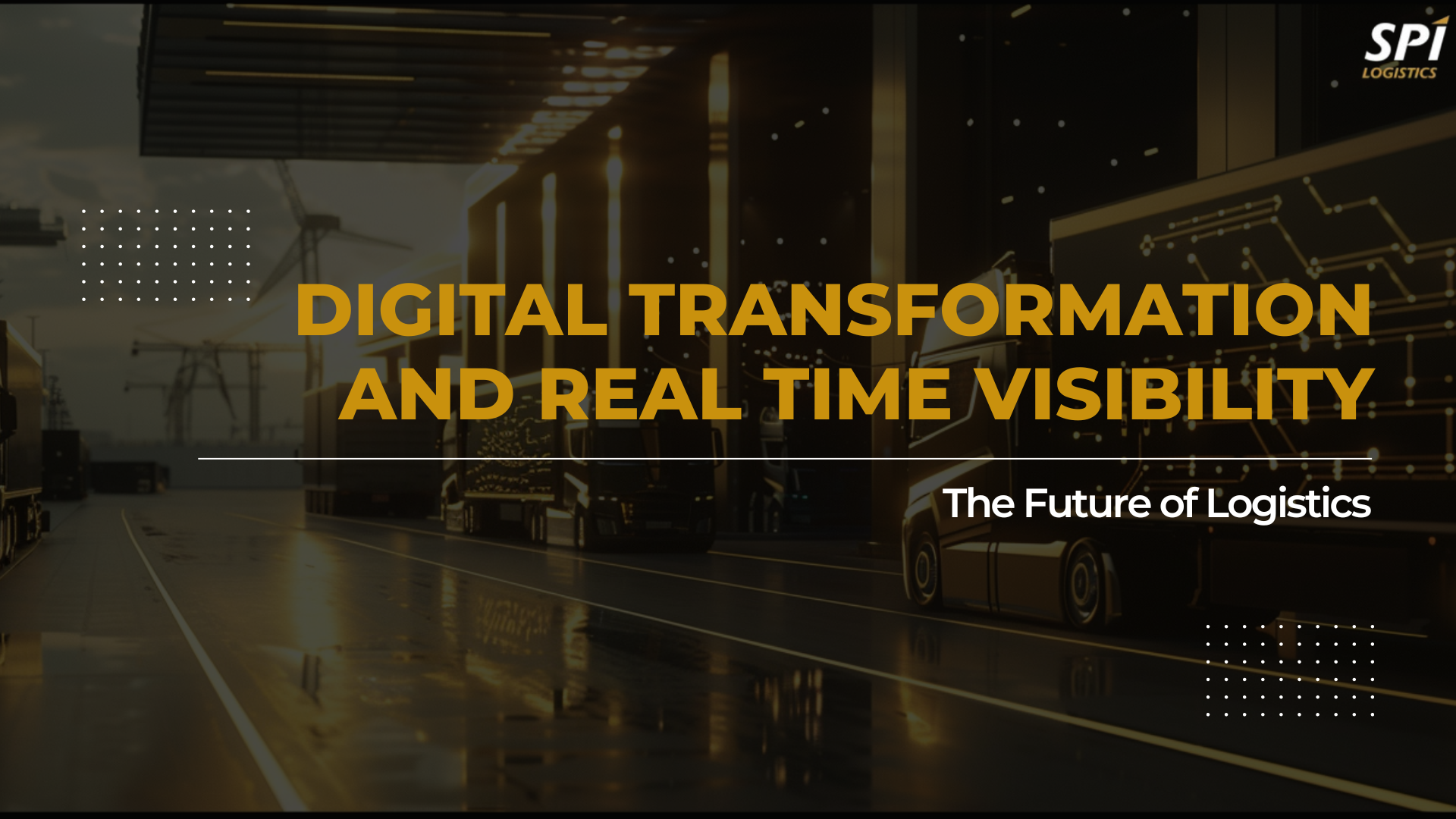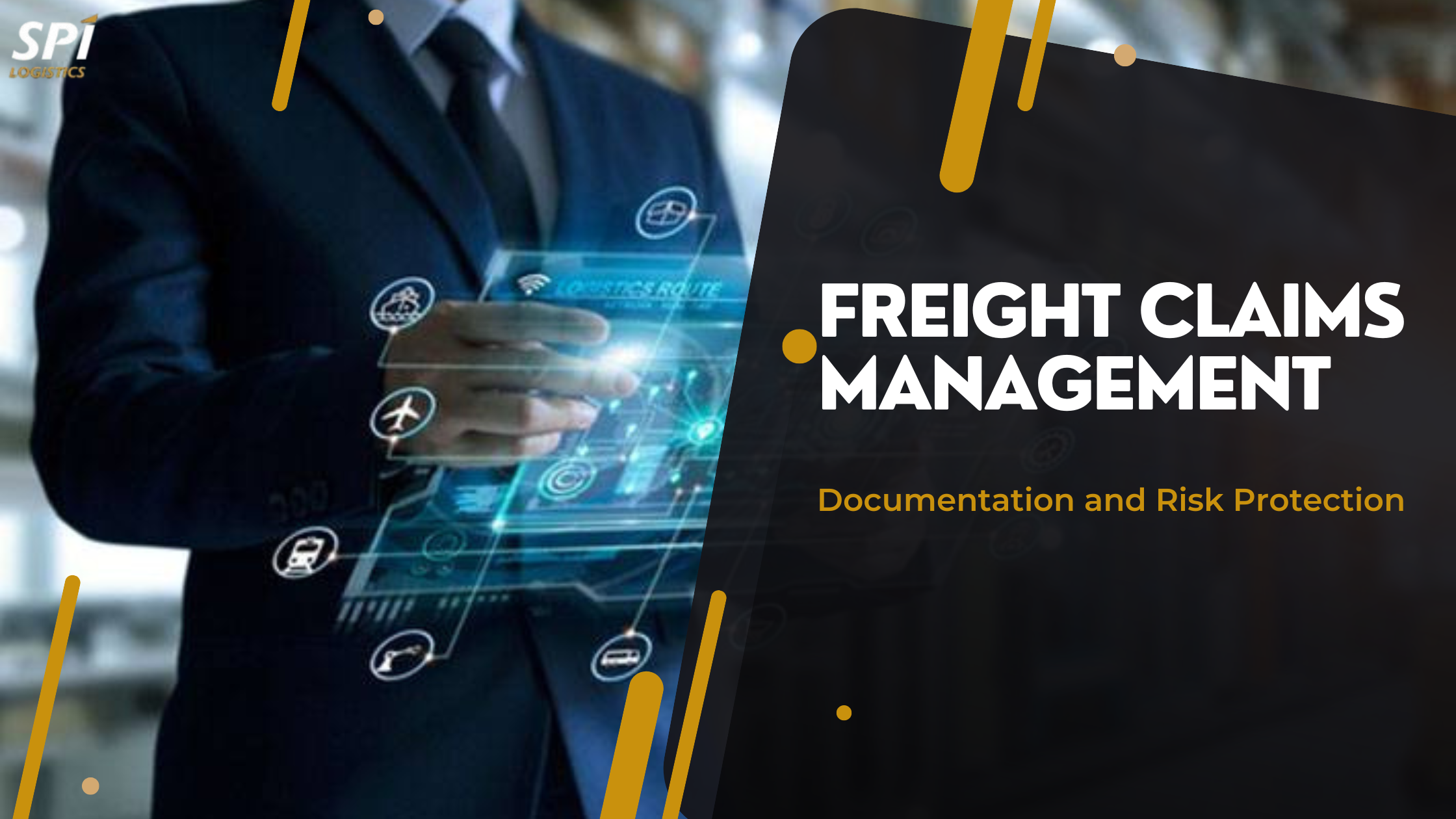The logistics industry is experiencing one of the most significant transformations in modern history. Fueled by digital transformation logistics and a global push for sustainability in logistics, companies are rethinking how they operate, from warehousing to last-mile delivery.
Technologies such as IoT-enabled tracking logistics, real-time visibility logistics, and smart logistics technology are enabling a more transparent, efficient, and environmentally responsible ecosystem. Meanwhile, the need for green logistics solutions and digital sustainability logistics is redefining how supply chains function.
The Digital Transformation Revolution in Logistics
Digital transformation logistics is not a single initiative, it’s a strategic overhaul that integrates technology, data, and automation across every stage of the supply chain.Current logistics leaders are leveraging digital tools to streamline operations, improve visibility, and enhance collaboration.
Key Pillars of Digital Transformation
-
Automation and Robotics:
Automated guided vehicles (AGVs) and robotics are revolutionizing warehouse operations. Amazon’s Kiva robots, for instance, have reduced picking times by 20% while optimizing inventory space (Amazon Robotics, n.d.). -
Data-Driven Decision Making:
Companies use predictive analytics to forecast demand and optimize routes, contributing to reduced delays and better cost management. -
Cloud-Based Systems:
Integrated platforms now allow global teams to collaborate in real-time, reducing data silos and human error. -
Customer Experience:
Consumers expect precision and speed. Real-time shipment tracking provides transparency and builds trust (FedEx, n.d.).
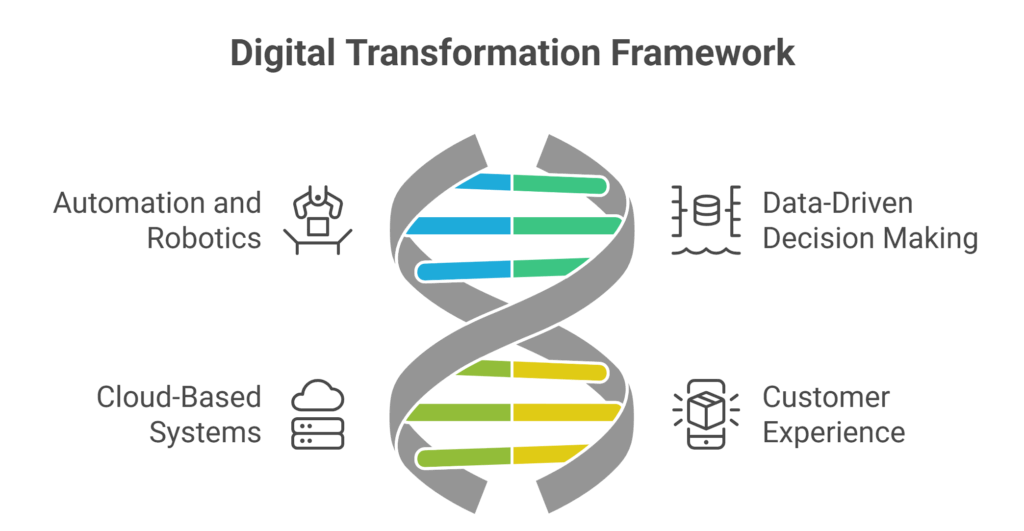
Example: DHL has invested heavily in digital transformation supply chain initiatives. Its “Resilience360” platform integrates AI, IoT, and predictive analytics to forecast disruptions and maintain smooth operations globally (DHL, n.d.).
“Digital transformation in logistics isn’t just about automation, it’s about visibility, agility, and resilience. Companies that digitize their operations are better equipped to adapt to market volatility and shifting consumer expectations.”
How has your organization approached digital transformation logistics? Are you prioritizing automation, visibility, or data integration as your first step?
Real-Time Visibility and IoT
Modern logistics thrives on real-time visibility logistics, powered by IoT in supply chain management. From tracking shipments in motion to monitoring temperature-sensitive goods, IoT sensors offer unprecedented transparency.
How IoT Is Transforming Operations
-
IoT-Enabled Tracking Logistics:
Sensors attached to containers or vehicles monitor conditions like temperature, humidity, and shocks in transit. -
Predictive Maintenance:
IoT data alerts managers when a vehicle or machine needs servicing, minimizing downtime. -
Inventory Control:
Smart warehouses use IoT tags to locate and count goods instantly. -
Data-Driven Risk Mitigation:
With real-time shipment tracking, companies can reroute shipments during disruptions such as port congestion or weather delays (UPS, n.d.).
Example: Maersk uses IoT and cloud-based tracking for over 18,000 containers globally, offering clients real-time shipment tracking and proactive alerts for any delays or environmental deviations (Maersk, n.d.).
“IoT isn’t just a monitoring tool; it’s a predictive asset. When combined with analytics, it enables proactive decision-making, leading to cost savings and service reliability.
Ready to enhance your operations with smarter technology? Discover how freight broker technology is transforming logistics efficiency.
Sustainability in Logistics
As the world becomes more eco-conscious, sustainability in logistics has become both a moral responsibility and a competitive differentiator. Companies are turning to green logistics solutions and sustainable logistics solutions to reduce emissions, minimize waste, and improve efficiency.
Sustainable Strategies in Practice
-
Alternative Fuels:
UPS has invested over $1 billion in alternative-fuel vehicles and fueling stations, reducing annual CO₂ emissions by over 100,000 metric tons (UPS, n.d.). -
Eco-Friendly Warehouses:
Solar-powered warehouses and energy-efficient lighting are helping companies lower carbon footprints. -
Optimized Routing:
AI algorithms cut unnecessary mileage and fuel use, supporting digital sustainability logistics. -
Circular Packaging:
Reusable pallets and recyclable materials are becoming industry norms.
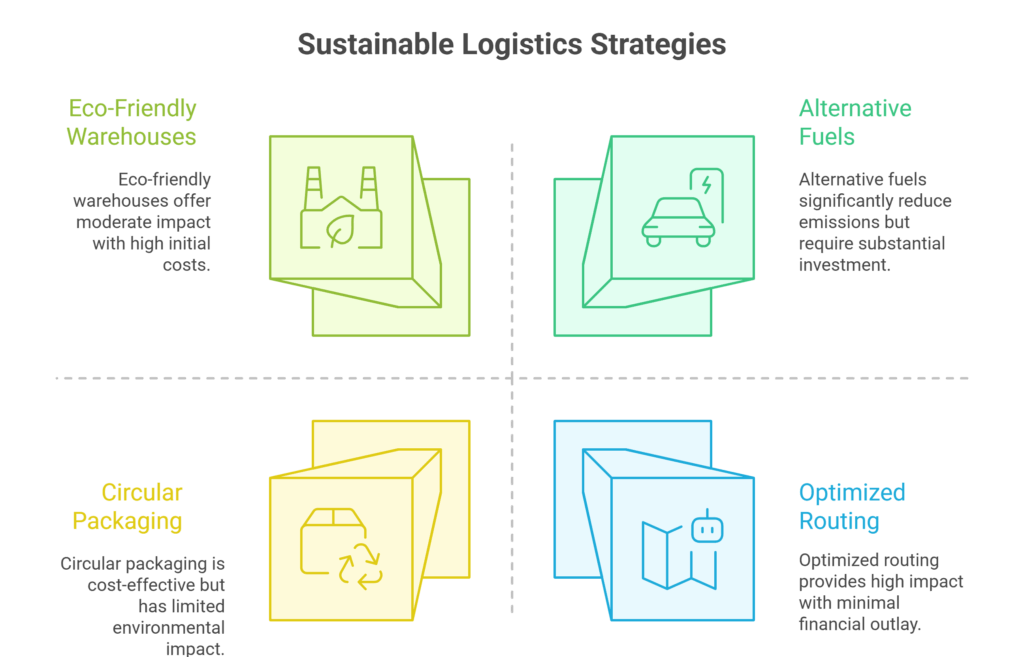
Example: FedEx has committed to achieving carbon-neutral operations by 2040 through electric fleets and sustainable aviation fuels, setting a new benchmark for the future of logistics.
“Sustainability and profitability are no longer opposites, they’re partners. The businesses embracing digital sustainability logistics now are shaping long-term resilience and brand trust.”
How is your company implementing green logistics solutions? Are your sustainability efforts driven by regulation, customer demand, or internal values?
Smart Logistics Technology
The emergence of smart logistics technology is transforming every element of the logistics value chain. From AI-driven forecasting to blockchain transparency, intelligent tools are driving smarter decisions and faster execution.
Smart Solutions in Play
-
AI Route Optimization:
Algorithms consider weather, fuel, and delivery times to determine the most efficient paths. -
Blockchain for Transparency:
Smart contracts automatically verify transactions and prevent data tampering. -
Digital Twins:
Virtual models of logistics networks simulate disruptions and predict performance outcomes. -
Collaborative Robots:
Cobots in warehouses increase safety and productivity by handling repetitive tasks.
Example: IBM’s collaboration with shipping companies on blockchain-based logistics platforms has improved data integrity and reduced fraud in international trade.
“Smart logistics technology is the heart of operational intelligence. By fusing AI, IoT, and blockchain, companies are achieving visibility that was once impossible.”
Which smart logistics technology do you think will have the greatest long-term impact; AI, blockchain, or robotics?
Overcoming Challenges in Digital Sustainability
While progress is undeniable, achieving digital sustainability logistics isn’t without hurdles.
The biggest barriers include:
- Integration Complexity: Legacy systems often lack compatibility with new digital platforms.
- Cost of Implementation: Upfront investment in IoT and AI can deter smaller logistics firms.
- Data Security: Digital transformation introduces cybersecurity risks that must be addressed.
- Skilled Workforce Shortage: The demand for tech-savvy logistics professionals is rising sharply.
Pathways to Overcome Barriers
- Collaborative Ecosystems: Partnerships between logistics providers, tech firms, and regulators can reduce costs and standardize solutions.
- Gradual Digital Adoption: Start with scalable pilots before full deployment.
- Training & Upskilling: Continuous learning ensures teams stay aligned with new technologies.
“The road to sustainable digital transformation isn’t linear. It requires patience, collaboration, and a clear roadmap, but the long-term ROI is undeniable.”
What’s your biggest challenge in achieving digital sustainability logistics?
The Role of Data Analytics in Logistics Optimization
Big data is the lifeblood of digital transformation supply chain management. It enables real-time decision-making, predictive forecasting, and strategic optimization.
Ways Data Analytics Drives Value:
- Demand Forecasting: Helps reduce inventory overstock and understock situations.
- Route Optimization: Data-driven insights cut delivery time and fuel consumption.
- Performance Tracking: KPIs based on live data improve accountability.
- Customer Behavior Analysis: Enables personalized delivery options and faster responses.
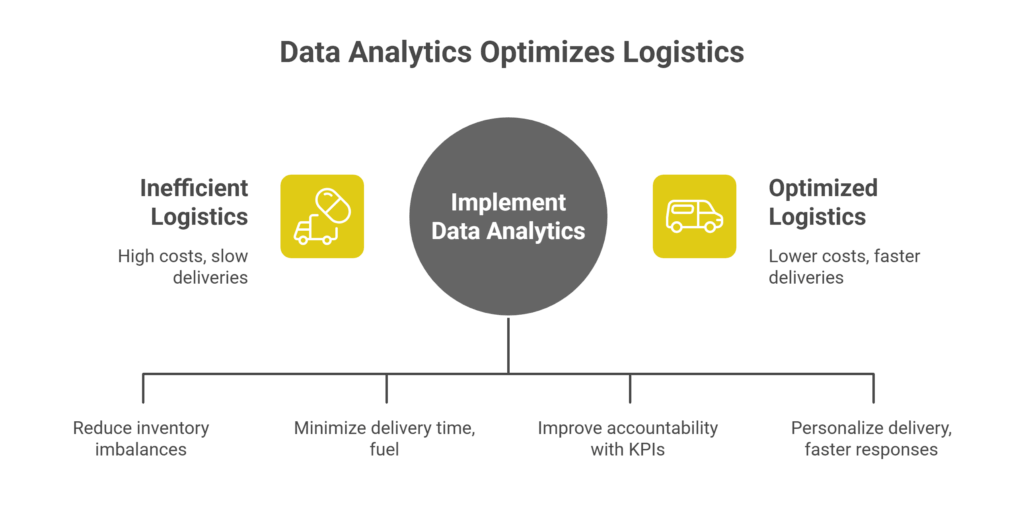
Example: DHL’s “SmartTruck” uses real-time traffic and weather data to determine the most efficient delivery routes, saving 10–15% in fuel costs (DHL, n.d.).
“Data isn’t just informative, it’s transformative. Logistics leaders who harness analytics gain clarity, precision, and competitive edge.”
How effectively is your company leveraging analytics to enhance real-time visibility logistics and optimize deliveries?
Collaborative and Resilient Supply Chains
The future of logistics depends on ecosystem partnerships; connecting carriers, shippers, and technology providers in unified, transparent networks.
How Collaboration Builds Resilience:
- Shared Platforms: Cloud-based systems enable instant data sharing.
- Risk Diversification: Multiple supplier networks prevent bottlenecks.
- Sustainability Partnerships: Joint investments in green logistics solutions amplify environmental impact.
- Disruption Response: Coordinated data allows faster rerouting during crises (IBM, n.d.).
Example: The collaboration between Maersk and IBM on blockchain logistics demonstrates how data transparency enhances resilience and trust among global stakeholders (Maersk, n.d.).
“Collaboration transforms competition into innovation. Digital ecosystems amplify efficiency while enabling shared sustainability goals.”
Looking for ways to simplify your back-office workload? See how back-office automation can save time, cut costs, and improve your freight brokerage performance.
Frequently Asked Questions (FAQs)
1. What does digital transformation in logistics mean?
It refers to adopting technologies like AI, IoT, and automation to improve operational efficiency, visibility, and sustainability across the supply chain.
2. How does IoT help with real-time shipment tracking?
IoT in supply chain management enables real-time shipment tracking through connected sensors that monitor location, temperature, and movement, ensuring transparency and quality control.
3. What are the benefits of green logistics solutions?
Green logistics solutions reduce emissions, lower operating costs, meet compliance standards, and enhance brand reputation through eco-friendly practices.
Lead the Change Toward Smart, Sustainable Logistics
The future of logistics lies in harmonizing technology with sustainability. By embracing digital transformation logistics, IoT-enabled tracking logistics, and green logistics solutions, companies can achieve operational excellence while protecting the planet.
The journey toward digital sustainability logistics isn’t optional, it’s essential for businesses that aim to thrive in a connected, conscious, and competitive world.
Ready to build a smarter, greener supply chain? Contact us to learn how IoT-enabled tracking and eco-friendly strategies can optimize your operations.
References
Amazon Robotics. (n.d.). Automation and warehouse innovation. Retrieved from https://www.aboutamazon.com
DHL. (n.d.). Resilience360 and SmartTruck logistics solutions. Retrieved from https://www.dhl.com
FedEx. (n.d.). Sustainable logistics operations. Retrieved from https://www.fedex.com
IBM. (n.d.). Blockchain for supply chain transparency. Retrieved from https://www.ibm.com
Maersk. (n.d.). IoT and real-time shipment tracking solutions. Retrieved from https://www.maersk.com
UPS. (n.d.). Green fleet and sustainable shipping initiatives. Retrieved from https://www.ups.com

